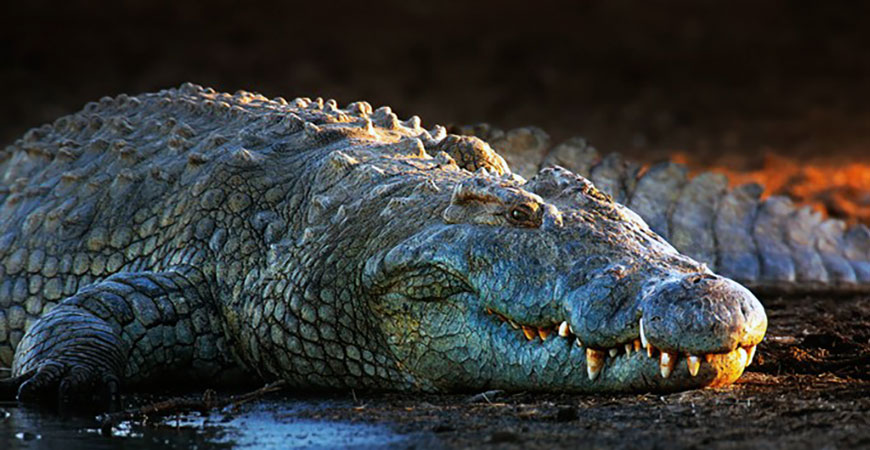
Shark Week starts Sunday and Professor Sora Kim will be featured again this year in a special airing at 9 p.m. Monday, titled “Jaws vs. Mega Croc,” and the filming allowed her to swim with a Nile crocodile.
“I flew to Florida and learned about crocodiles – their evolution, strength, physiology and behavior. More interactions are being recorded between sharks and crocodiles these days, so I also needed to learn about these situations,” she said.
At the crocodile and wildlife rescue and rehab Everglades Outpost, Kim swam in a large tank with a smaller plastic tank containing a crocodile inside. The plastic was thick and of an ultra-high grade in terms of both strength and clarity. A mesh cover prevented the crocodile from jumping into the larger tank, and a medic stood by just in case.
“It was really incredible and a new experience for me,” she said. “I wasn’t scared, given all the safety precautions. It was breathtaking to see the crocodile in the water, especially when we were nose to nose at the bottom.”
 Her research into megalodon, the biggest shark species that ever lived, has made Kim a featured scientist on the Discovery television series for the past several years. The UC Merced paleoecologist has been researching megalodon and the reasons behind its extinction, using stable isotopes in fossil teeth found in nearly every ocean on the planet. The isotopes have told her and other scientists about megalodon’s diet, its environment and its physiology.
Her research into megalodon, the biggest shark species that ever lived, has made Kim a featured scientist on the Discovery television series for the past several years. The UC Merced paleoecologist has been researching megalodon and the reasons behind its extinction, using stable isotopes in fossil teeth found in nearly every ocean on the planet. The isotopes have told her and other scientists about megalodon’s diet, its environment and its physiology.
Mega croc might seem like something invented for a “Jurassic Park” movie but such giant reptiles once existed. Fossil evidence indicates that Deinosuchus could reach lengths of over 35 feet and weigh more than 5 tons.
This "terrible crocodile" was a top predator in the wetlands of North America during the late Cretaceous Period, the last period of the Mesozoic Era, which lasted from approximately 145 million to 66 million years ago. Fossil evidence, including bite marks on dinosaur bones, confirms Deinosuchus’ ability to prey on enormous dinosaurs, according to the National Park Service.
Deinosuchus likely lived in both freshwater and saltwater environments, contributing to its wide distribution along the coasts of North America.
Besides Deinosuchus, other prehistoric crocodiles, such as Sarcosuchus from Africa, also reached enormous sizes, with some estimated to be about 40 feet long, according to A-Z Animals. Most giant crocodiles, including Deinosuchus, became extinct alongside the dinosaurs, but some species survived the Cretaceous-Paleogene extinction event.
Previous Shark Week specials focused on megalodon and great white sharks. Last year, Kim got to dive with white sharks. This year’s show centers on a face-off between a modern-day great white and a Nile crocodile, a freshwater species mainly found in 26 African countries.
Nile crocodiles can grow to be as long as 20 feet and are the second-largest reptilian predators, behind the saltwater crocodile. They are very aggressive and feed on other reptiles, fish, birds, and mammals such as zebras. The Nile crocodile is one of the most dangerous species of crocodile and is responsible for hundreds of human deaths every year, according to scientific reports.
The Shark Week schedule can be found online. Shark Week can also be seen on HBO Max.

